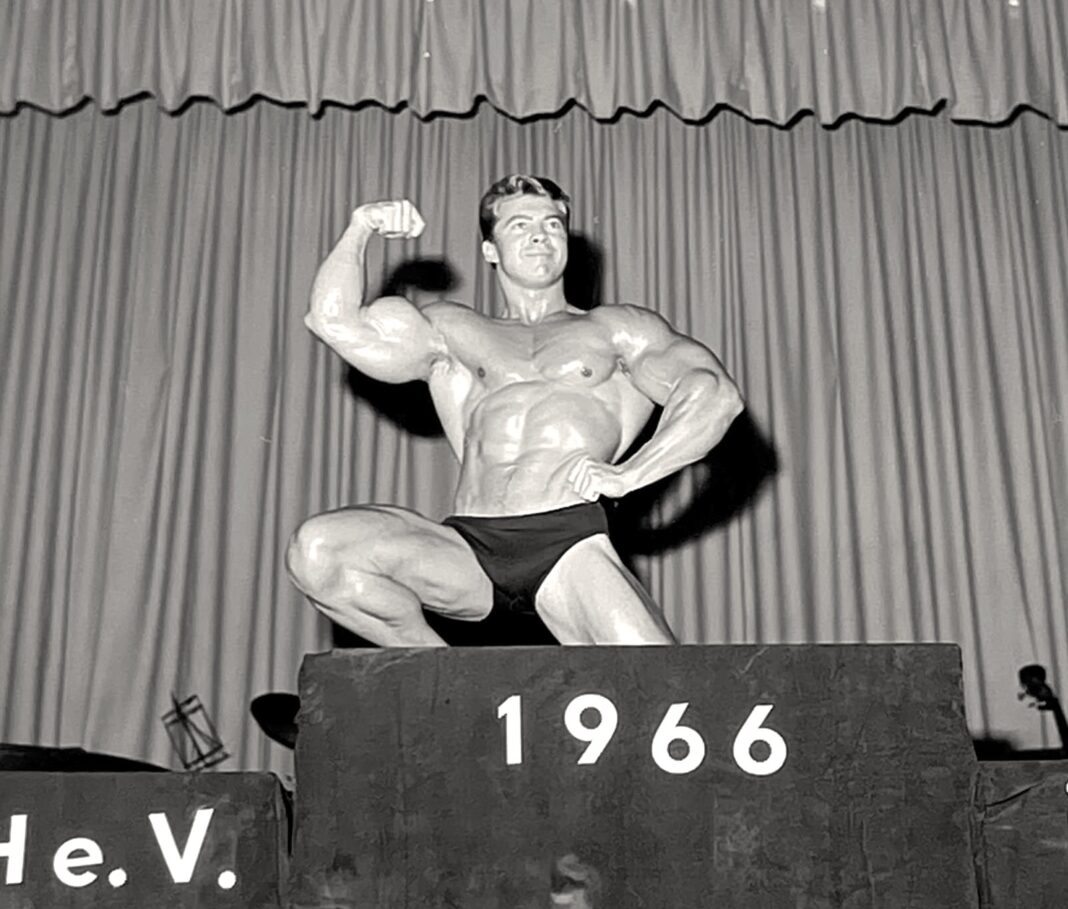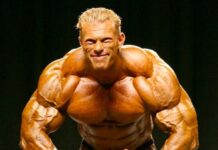The 1966 Mr. Olympia was the last Olympia for winner Larry Scott and the first for future three-time winner Sergio Oliva. The former was only 26, the latter only 25. And the Olympia itself was only two, having debuted the year before. Again, the new “pro show” (the first with a financial prize: $1000) was held in the Brooklyn Academy of Music at the end of a crowded collection of events. With the same ticket, you first saw Chet Yorton win Mr. America, Dave Draper win Mr. Universe, and Sergio Oliva win Mr. World.
Star Trek had only just debuted the week before, the Beatles and Beach Boys were all over the radio, and a war was raging in Vietnam when the world’s best bodybuilders congregated in Brooklyn. Let’s journey back to September 17, 1966, to check out the second Mr. Olympia.
EYEWITNESS REPORT
The following report was written by Bud Parker (the promoter/announcer of the Olympia) and appeared in Muscle Builder magazine:
With the presentation of the last awards (to the Mr. America, Mr. World, and Mr. Universe), the stage was cleared and the lights adjusted for the final contest, the most coveted physique event in all the world—the Mr. Olympia contest. A hush fell over the audience.
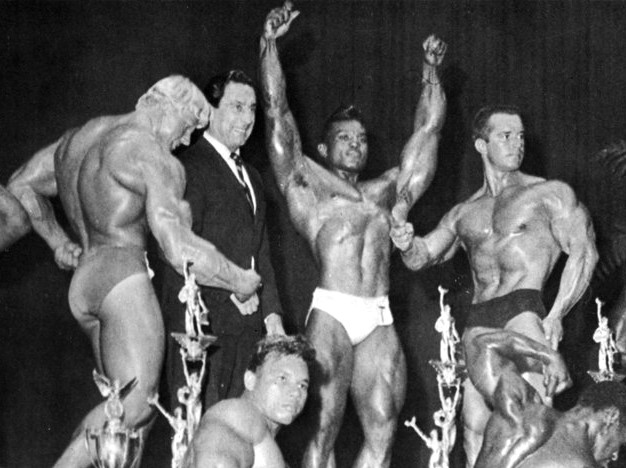
The first man out was Chuck Sipes, a former Mr. America and Mr. Universe winner, who possesses one of the finest physiques in the world. His rock-hard definition and massive proportions thrilled the fans. He was in great shape. In any other event he would have won—but this night it was a fight among the greatest. The fans roared their approval.
Next, Sergio Oliva—just minutes before proclaimed Mr. World. Sergio is massive and possesses ideal proportions that are defined to their limit. Recognized as one of the world’s all-time greats, he is just “beginning” his career as an IFBB champ. Like Sipes, in any other event he would have taken the title without effort.
Next, Harold Poole, also a former Mr. American and Mr. Universe. Harold was looking at his best this night, far superior to his development last year—when he lost the Olympia title to Scott. The audience recognized that improvement and cheered him wildly. He was thick and cut-up. His posing routine was perfect. At this point, it looked as if the contest would swing his way.
Then—Larry Scott, the title-holder. The applause was ear-shattering. With the perfection of a seasoned poser, Larry mounted the dais and went through his poses. In the best shape of his life, he was clearly the choice of the audience—judging by the ovation. When he stepped off, the fans cheered for more.
The selection would be difficult for the judges, and the panel wanted to be certain, so they asked the contestants to come out and pose together. The men mounted the dais and, side-by-side, went through various poses. Now all eyes were studying.
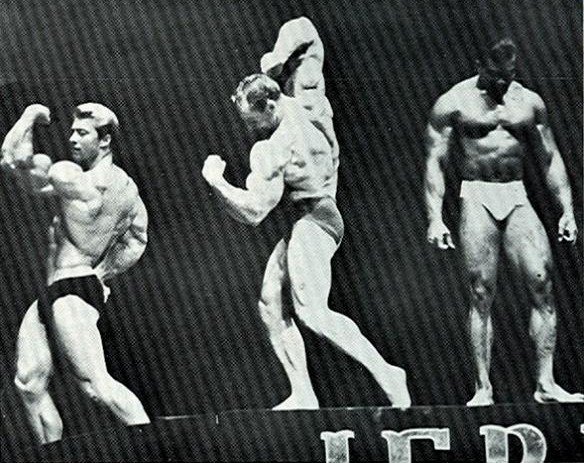
A brief intermission was called to give the judges time to reach a decision. They worked at it for 20 minutes—and then the announcement was made: “Mr. Olympia for 1966…Larry Scott.”
The fans applauded and whistled and stamped their feet in approval, and Joe Weider presented Larry with his commemorative silver plate lined with $1000 in cash.
Then, something startling—Larry took the microphone, thanked all his fans sincerely for their years of support and confidence in him, and announced that this would be his last competitive event. He was retiring from the posing dais, stepping out of the picture to make room for the new champs.
Even when the curtain fell for the final time, this great event would not end. The thousands of fans rushed around the stage door and awaited the champs—who filed out and passed through the crowd, shaking hands and giving autographs—the end of a historical and memorable evening.
LARRY SCOTT’S REMEMBRANCE
In 1978, Larry Scott held a seminar where he spoke extensively about the 1966 Mr. Olympia, offering his insights and a backstage view of the aftermath. What follows is taken from that seminar:
And as soon as Poole walked off the stage, they started: “We want Scott! We want Scott! We want Scott!”
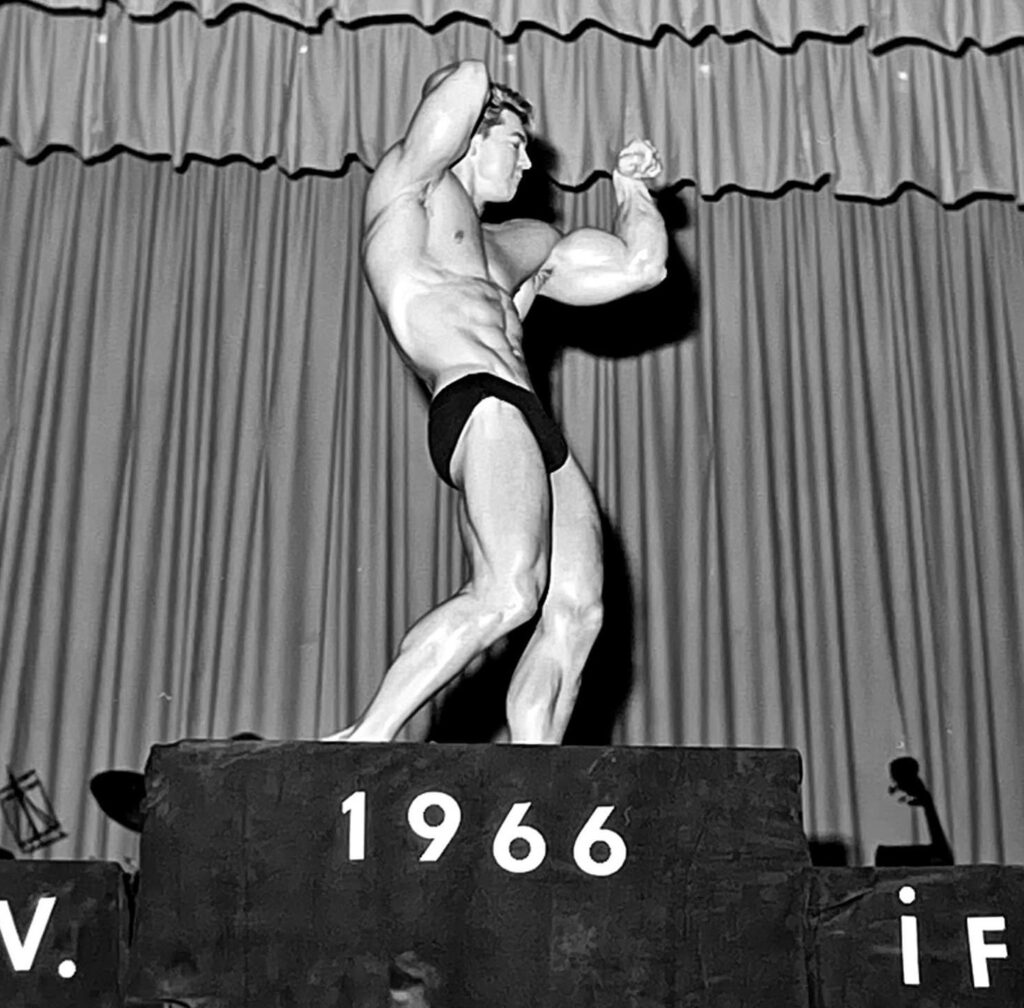
Then MC Bud Parker announced, “Now defending his Mr. Olympia title, from California LAAARYYYYYYYY,” but he was drowned out just like in 1965. I went out and hit pose after pose. Finished and walked off. The audience yelled, “More! More! More!”
Bud Parker waved his hand to the audience and told then that I and all of the Mr. Olympia contestants would be back. This year for the first time ever the Mr. Olympia would feature a posedown with all four contestants. The audience roared in approval. Poole walked out first. Then Oliva. And I was right behind Oliva. Vince [Gironda, Scott’s trainer] told me to stand right next to Oliva during the posedown, which was my goal. All three of us were on stage, and then Sipes came running from the rear, and he squeezed between Oliva and me. So I was on the end.
Vince was coaching me from the audience. “Calves. Hit the calves. That is Sipes and Oliva’s weakness.” So I started flexing the calves. Then, as soon as the boys started posing, I hit my poses. Poole, Oliva, and Sipes all hit back shots, so I hit my 3/4 twisting back shot. I was enjoying this. Somebody from the audience yelled, “It’s the battle of the giants!” And it sure felt like that.
I heard the audience yelling my name and I looked at the judges. All eyes were moving on all four of us. The judges were carefully evaluating who would be Mr. Olympia. And I knew I was in for a real battle. In 1965, I dominated the contest. This year, it would be much different. I was heavier, 215 pounds compared to 205 in 1965, but I was smoother.
Vince yelled for me to hit ab shots: “Oliva has a small waist but no abs! Show him your abs, Larry!” Which I did. The audience was yelling for arm shots, and I complied. I must have hit every pose in the book. Vince yelled for me to slow down and hold my poses longer, which I did.
In 1966, the judges took longer to decide the winner [than 1965]. Finally, the head judge walked up to Bud Parker with the winner’s name in an envelope. Bud Parker looked out to the audience and said: “Mr. Olympia for 1966…Larry Scott!” I couldn’t believe the reaction of the audience. They were screaming and gave me a standing ovation. Too much. I am not sure I deserved it. Then I told [magazine publisher and Olympia owner] Joe Weider I wanted to make an announcement to the fans. Joe knew what it was.
I am no public speaker. My mouth was too close to the mic, and the sound went all over the auditorium. Then finally I got it together and started speaking to the fans. I told them that I thanked them for their support but the time has come for me to move on to new horizons. I told them that I met a beautiful lady and was to be married and I could not serve two masters so I would be retiring from competition. Several fans yelled, “No, Larry, no!” I thanked them but said I had to retire. There was no other way. I waved, said, “God bless all of you,” and walked off the stage.
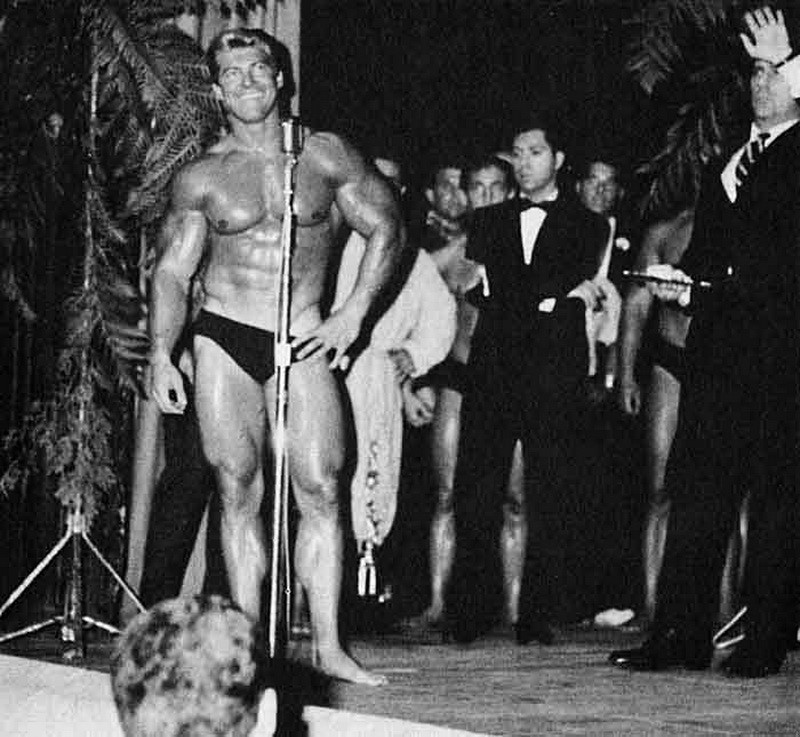
As I was walking backstage I heard Oliva and Poole murmuring about the contest. They were both unhappy. Oliva said, “Joe Weider wanted Larry Scott to win.” Harold Poole said, “Weider gave it to Larry because the IFBB is sending Larry to the UK to guest pose and they wanted him to go as Mr. Olympia.”
When I heard this, I went right to Joe Weider and said I was prepared to relinquish the Mr. Olympia title. I told Joe that when I came over to the IFBB in 1962, the agreement was that judging would be fair and the best man would win. Joe was perplexed and wondering why I was complaining in that I had won. I told him that Oliva and Poole both thought that I didn’t deserve it. About this time [bodybuilder] Leroy Colbert walked by. Joe asked Leroy to get the ballots for the Mr. Olympia. In those days, they did not use scoresheets for the Olympia, only ballots. Each judge voted for the man they thought deserved to win.
Joe handed me the ballots. I looked at each one of them, and every judge picked me. Oliva came by and forcefully grabbed them out of my hands, looked at them and said, “This is bullsh*t. Weider just like [Bob] Hoffman. IFBB just like AAU.” Poole looked at the ballots and couldn’t believe he didn’t even get one judge to vote for him
Oliva walked out. Poole stayed and Sipes was there. Chuck came over to me, extended his hand and congratulated me. And said, “If anyone should be upset, it should be me. I was Joe’s poster boy before you came on board, Larry, and was undefeated coming into this contest. As I see it, Larry, you won because you deserved it.”
POSTSCRIPT
Though he made a brief comeback in 1979, Larry Scott never competed in the Mr. Olympia again. Harold Poole and Chuck Sipes both competed in the 1967 Mr. Olympia, the final Olympia for both. Sergio Oliva won the next three Mr. Olympias—1967-69. He defeated Arnold Schwarzenegger in the latter contest but lost to him in 1970 and 1972. He then stayed off the Olympia stage for a dozen years, before making a middle-aged return to the Mr. O in 1984 and 1985.
1966 MR. OLYMPIA RESULTS
September 17, 1966 / Brooklyn Academy of Music, New York City
1. Larry Scott ($1000)
Sergio Oliva
Harold Poole
Chuck Sipes
Note: Only the winner was determined, so the other three competitors are listed here alphabetically. Unlike the debut Olympia, there was a cash award for the winner: $1000 ($9400 in today’s dollars).
Opening Image: Larry Scott guest posing one month after the 1966 Mr. Olympia. / Benno Dahmen



































